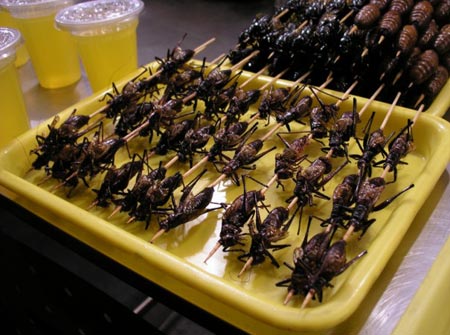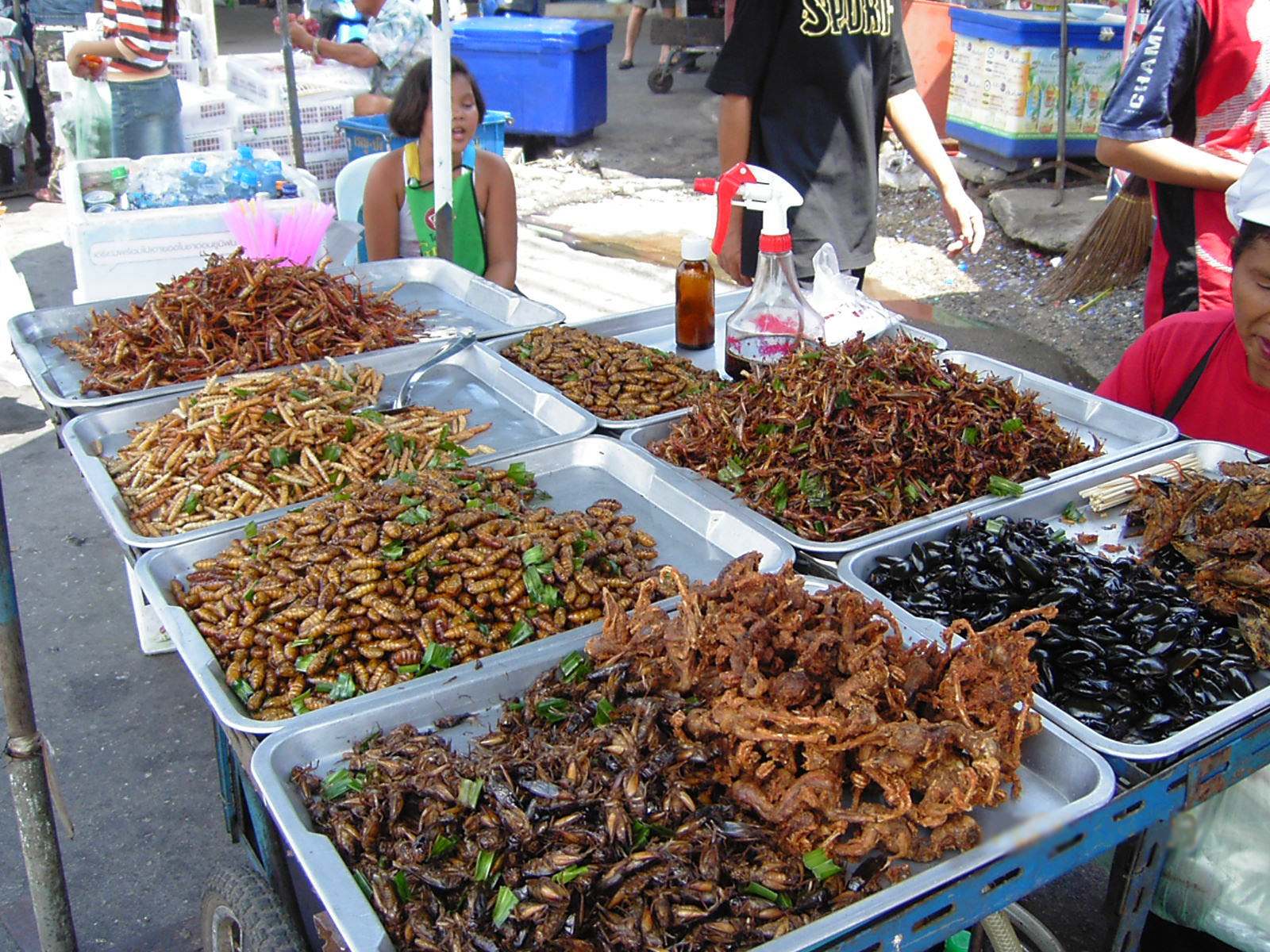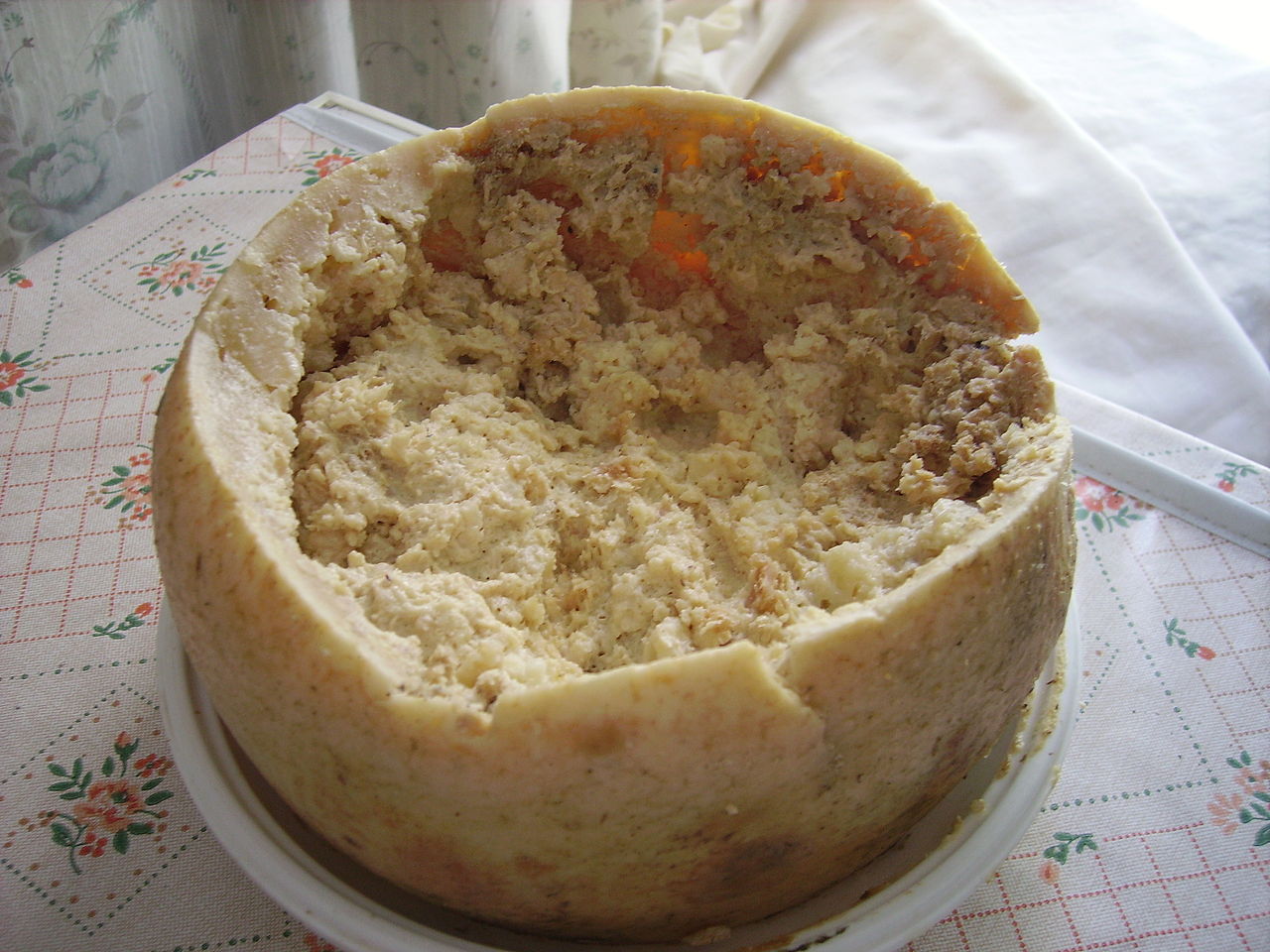“The practice of eating insects goes back thousands of years and has been documented in nearly every part of the world. In modern times, however, consumption of insects has declined in many societies and is sometimes ridiculed as old-fashioned and unhealthy. Yet, it would be prudent to carefully consider the value of customary knowledge before discarding it too readily. Scientific analysis confirms, for example, the exceptional nutritional benefits of many forest insects, and studies point to the potential to produce insects for food with far fewer negative environmental impacts than for many mainstream foods consumed today. Aside from their nutritional and environmental benefits, experts see considerable opportunity for edible insects to provide income and jobs for rural people who capture, rear, process, transport, and market insects as food. These prospects can be enhanced through promotion and adoption of modern food technology standards to ensure that the insects are safe and attractive for human consumption” (source).
“Western diners should get used to the idea of eating insects because by 2020 it is ‘inevitable’ they will form an important part of our diet, according to Prof Marcel Dicke of Wageningen University, the entomologist who heads up the world’s first university center focusing on insects as a food source. He argues that consumers who have traditionally turned their noses up at six-legged food may have to change their minds as conventional meat becomes more expensive and scarce. In an interview with Wired magazine, he said: ‘The most important thing is getting people prepared, getting used to the idea. Because, from 2020 onwards, there won’t be much of a choice for us.’ He wants to persuade people to ditch prejudices about insects, and to persuade manufacturers and suppliers to come up with products that can be sold in ‘a reassuring and attractive manner’. Dicke heads a Netherlands-based four-year program aiming to produce a scientific and business plan to bring insects to western tables” (source).
“Throughout the history of mankind, eating insects has actually been a common idea. In the United States, the population has been rather guarded, however, of utilizing this valuable commodity. This causes some amusement when one considers that honey is a common product, but actually has been regurgitated by insects in its production. Parts of insects are consumed by humans more commonly than generally expected. It is impossible to perfectly eliminate all forms of insects when harvesting and processing some crops, thus allowances are set in the United States by the Food and Drug Administration to permit certain numbers of insects or their parts in processed foods. As one would expect, when insects are eaten (in other parts of the world) they are usually those that may be gathered in large numbers. Examples are social insects, such as ants, and especially termites, and locusts that migrate in hordes of millions of individuals. Some human societies actually utilize insects as a major source of protein” (source).
“The practice of eating bugs dates back millennia. In scripture, the book of Leviticus lays out laws and codes for day-to-day living in the ancient world, including diet. While Chapter 11, verses 6 to 8 puts the kibosh on eating rabbit and pork, verse 22 gives the green light to eating certain insects: “Even these of them ye may eat; the locust after his kind, and the bald locust after his kind, and the beetle after his kind, and the grasshopper after his kind.” (Other translations also include katydids.) In present-day cultures, bugs have gone so far as to attain delicacy status—be it the fried caterpillars served in Africa, grasshoppers with soy sauce in Japan or water boatman eggs in Mexico city, which are supposed to have a caviar-like flavor and can cost more than beef. Even some of Washington, D.C.’s upscale dining spots offer exotic spins on familiar foods, such as tacos stuffed with grasshoppers.
But why even look to bugs as a food source? First off, certain bugs, such as caterpillars, have a protein content that is comparable to beef. Second, farm-raising bugs is a big energy saver. Raising livestock is problematic because of the amount of energy required to create those neatly packaged cutlets at your local grocery store. Large chunks of land are set aside to produce feed and for the animals to live and breed, not to mention the fossil fuels needed to transport animals from farm to slaughterhouse and then to market. And, at least with the beef industry, cattle produce more greenhouse gases than cars, contributing to global warming.
Then there’s the matter of the resources it takes to fatten up an animal until it’s ready for the table. When the Wall Street Journal broke down the numbers, the same 10 pounds of feed used to produce 1 pound of beef or five pounds of chicken could also yield up to six pounds of insect meat. Furthermore, while we may think insects are dirty and unhealthy, recall mad cow disease and salmonella and the risk that those meat-borne pathogens pose to us humans. And certain bugs are fortified with fats and vitamins that could help fend of malnutrition and starvation. With the United Nations predicting we will have one-third more mouths to feed by 2050, while still trying to deal with existing issues of hunger and starvation, finding alternate, sustainable protein sources will become even more urgent” (source).
“Though it is true that intentionally eating insects is common only in developing countries, everyone already eats some amount of insects. The average person consumes about a pound of insects per year, mostly mixed into other foods. In the U.S., most processed foods contain small amounts of insects, within limits set by the Food and Drug Administration. For chocolate, the FDA limit is 60 insect fragments per 100 grams. Peanut butter can have up to 30 insect parts per 100 grams, and fruit juice can have five fruit-fly eggs and one or two larvae per 250 milliliters (just over a cup). We also use many insect products to dye our foods, such as the red dye cochineal in imitation crab sticks, Campari, and candies. So we’re already some of the way there in making six-legged creatures a regular part of our diet” (source).
“Insects in cuisine today are what sushi was two decades ago” (Marc Dennis, internationally recognized artist, professor of art at Elmira College, and founder of insectsarefood.com).
Article by Bill Norrington








